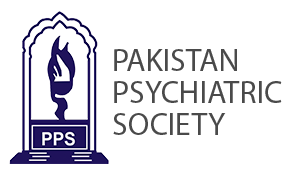MISSED SEIZURE DURING ELECTROCONVULSIVE THERAPY
Abstract
Background: Here, the authors reported two cases of electroconvulsive therapy with a missed seizure and present a literature review to explore the possible reasons and recommendations. To date, most authorities agreed seizure duration correlates to the effectiveness of the ECT, and a reason to a minimum of 25 seconds duration of seizure is defined as a good seizure. Many aspects of the seizures during the ECT are well researched and lots of data is available about the possible modifiers of seizures, indicators of an effective seizure, and ways to monitor an effective seizure but very few data reported missed seizures and strategies to follow in the events of no fits. In this case series, we described two cases of missed seizures which were identified and addressed appropriately with subsequent successful ECT sessions. We also presented the literature regarding the strategies to follow immediately post-event.
Case 1: A 42-year-old married lady with a diagnosis of bipolar type I disorder, current episode manic, with psychotic symptoms (6A60.1) according to the ICD-11 diagnostic and classification system.
Case 2: A middle-aged male with a diagnosis of severe depressive episodes with psychotic symptoms.
Both cases had missed seizures during the 3rd session of the electroconvulsive therapy.
Conclusion: Studies have shown that the phenomena of missed seizures are common but less reported and are caused by a number of factors including individual factors, the ECT technical parameters as well as concurrent use of pharmacological treatment and anesthetic agent which should be considered before every ECT session. There is a paucity of literature on the strategies to follow immediately after an event of no fits. Therefore, we tried to summarize some possible recommendations which need to be personalized according to a case-to-case basis.
Downloads
References
References
Raheem Suleman, M.D. A Brief History of Electroconvulsive Therapy. 10 Sep 2020https://doi.org/10.1176/appi.ajp-rj.2020.160103
Guidance on the use of Electroconvulsive therapy (ECT): National Institute for Health and Clinical Excellence; 2003 Apr. p5: Technology appraisal 59
Max Fink, M.D., and Richard Abrams, M.D. EEG Monitoring in ECT: A Guide to Treatment Efficacy. Psychiatric Times, May 1998.
Duddu, V. (2001). Use of the cuff method in electroconvulsive therapy – a response. Psychiatric Bulletin, 25(2), 75-76. doi:10.1192/pb.25.2.75-b
Sackeim H A., Prudic J., et al. Effects of stimulus intensity and electrode placement on the efficacy and cognitive effects of ECT. NEJM. 1993; 328: 839-846.
Madhavan Seshadri and Nadeem Z Mazi-Kotwal. Response Predictors in ECT: A discussion about Seizure Threshold. BJMP 2011;4(2):a424
WHO, International classification of Disease-11, https://icd.who.int/ct11/icd11_mms/en/release
Ramsay, N., & McPhillips, M. (1993). Training and supervision of electroconvulsive treatment in a psychiatric training rotation. Psychiatric Bulletin, 17(12), 716-718. doi:10.1192/pb.17.12.716
Copyright © JPPS. Published by Pakistan Psychiatric Society
Licensing: This work is licensed under Creative Commons Attribution-NonCommercial 4.0 International License
Readers may “Share-copy and redistribute the material in any medium or format” and “Adapt-remix, transform, and build upon the material”. The readers must give appropriate credit to the source of the material and indicate if changes were made to the material. Readers may not use the material for commercial purposes. The readers may not apply legal terms or technological measures that legally restrict others from doing anything the license permits.






.png)









